No matter how many recipes you can access online, there’s nothing quite as satisfying in the kitchen as having a real cookbook at your side, while you make your first or fiftieth creme brulée or a new roast chicken dish.
So think cookbooks as Christmas gifts, and don’t leave yourself out! Here, we have the pleasure of presenting you 12 reviews by award-winning essayist, FOF Annette Gallagher Weisman.
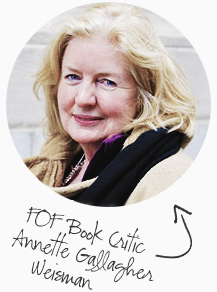
Annette Gallagher Weisman is an award-winning essayist and a longtime member of the National Book Critics Circle. Born and raised in Dublin, Ireland, she has written for numerous publications including the St. Petersburg Times, edibleASPEN, TheWineBuzz, Cincinnati Magazine, The Cincinnati Enquirer, Town & Country, People, and in the U.K. Vanity Fair and Over21. Annette received an MFA in writing and literature from Bennington College in Vermont.
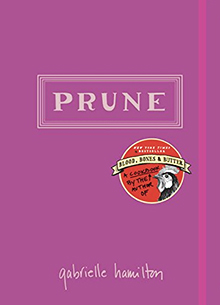
Prune
by Gabrielle Hamilton
Random House. 576 pp.
It could be said that Gabrielle Hamilton, the author of the controversial cookbook Prune, named after her NYC restaurant, has attitude. She may even be a dominatrix—in the kitchen that is—as she clearly likes things done the way she wants them to be done. As evidence, critics have pointed out the book’s handwritten notes on the recipes to her staff, telling them what to do or not. This doesn’t bother me: for instance, it makes sense not to stick your finger in the food that’s just been plated—even at home! But I was a bit dismayed by finding that the book has no foreword, no introductions per se, and no index at the back. Indeed, Prune seems rather like a beautifully packaged kitchen “Bible” for professional staff.

I was also a bit disconcerted by the lack of text, because Hamilton is a terrific writer. But she has said that she has already written a memoir, her excellent Blood, Bones, & Butter, and that if you want more information about her, go read that book. (I would recommend that you do. It’s one of the best memoirs by a chef ever written.) Prune is not for you if you can’t boil an egg or need to be hand held through basic steps. But if you are willing to be perplexed at times by some of the instructions, then go for it. You can always improvise if you don’t have a certain ingredient or piece of equipment. And substitutions, when not crucial, are half the fun of cooking. When it comes to the recipes themselves, all 250 of them, they are very clear with, for the most part, few ingredients, and I personally love those notes to the staff, as they offer real insight into how a kitchen works.

Visually attractive, with its deep magenta cloth cover and 241 color photographs, this is an ideal gift for the cook who likes to be creative, or for a cook who’d like to fantasize that he or she is part of the Prune “family,” being bossed around “on the line” by the accomplished, demanding Hamilton.


Make It Ahead
by Ina Garten
Clarkson Potter. 274 pp.
I have a crush on a curly-headed married man with an impish smile, Jeffrey. He is married to Ina Garten and pictured in her many cookbooks looking as happy as a man can be who is about to taste one of her dishes. On her TV show, Jeffrey’s always cheerful, as he tootles around the Hamptons or Napa Valley in a white Mini-Cooper, searching for that one item or two that will complete the meal. Whether it’s by bringing home the right wine or a certain cheese, Jeffrey is the icing on Ina’s cake.
But fans don’t begrudge Ina her affable husband Jeffrey, nor her great life in the Hamptons, because she is so likeable herself—the kind of person one senses will 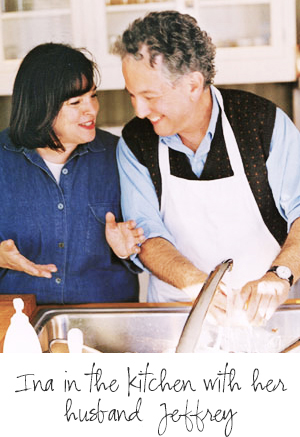 help out a friend with an impromptu meal or a festive event, not just on TV. And, refreshingly, she seems immune to strict admonishments by the guardians of caloric intake: Ina never met a pat of butter she didn’t like. A catch phrase, after making a dish on her show, is Ina saying, “How easy is that!” as if she, too, is amazed it all turned out so well.
help out a friend with an impromptu meal or a festive event, not just on TV. And, refreshingly, she seems immune to strict admonishments by the guardians of caloric intake: Ina never met a pat of butter she didn’t like. A catch phrase, after making a dish on her show, is Ina saying, “How easy is that!” as if she, too, is amazed it all turned out so well.
Ina Garten’s ninth cookbook is about ways to make your life easier by preparing an entire meal or part of it ahead of time—such as a simplified Provencal fish stew, a boon to those who like Bouillabaisse, or Baked Polenta with Mushrooms and Blue Cheese. Garten shows you how to take short cuts with holiday cooking, and provides sample menus. With 150 color photographs, tips for having a party, freezing, storage, and many other words of advice, it’s hard for a reader to go wrong. Now, we, too, can say after making one of her recipes, “How easy is that!”

A perfect gift for the holidays for all home cooks, even beginners.

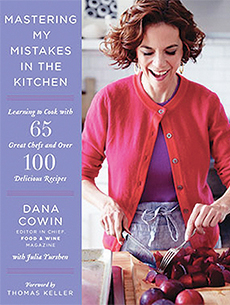
Mastering My Mistakes In The Kitchen: Learning to Cook with 65 Great Chefs
by Dana Cowin
Ecco/HarperCollins. 320 pp.
When I first heard about the premise for this book: a home cook mastering her mistakes in the kitchen, I wasn’t that enthused. I have my own mistakes to deal with, why would I want to learn about someone else’s? For me, the way to deal with most cooking gaffes is to stand petrified for a few moments before clicking my heels three times and getting on with it, as one has to do in life. But Dana Cowin is the long-term editor-in-chief of Food & Wine magazine, and she can call on anyone in the culinary world to help her. And that’s what she did: enlist the expertise of 65 renowned chefs to show her what she was doing wrong, how to correct her mistakes, and generally improve her cooking skills in the kitchen. By extension, we, the reader, benefit also.
Imagine how helpful it would be to have famous chefs such as Marcus Samuelsson, Tom Colicchio, Jose Andres, Mario Batali or Thomas Keller showing you the right way to do things. Not only that, they provide useful tips as well. From David Chang: “It may look ridiculous to season from up high, but it distributes the seasoning well so it doesn’t all land on one piece of cucumber.” From Sean Brock: “Think of buttermilk as yoghurt—use it in any dish that needs a little acid and dairy to balance it.” Cowin has a “cheat sheet” of her own that will appeal to those who like to be organized. As for the recipes, there are over 100 of them, easy to follow, such as Chili of Forgiveness and Seared Scallops with Fennel + Citrus Salad.
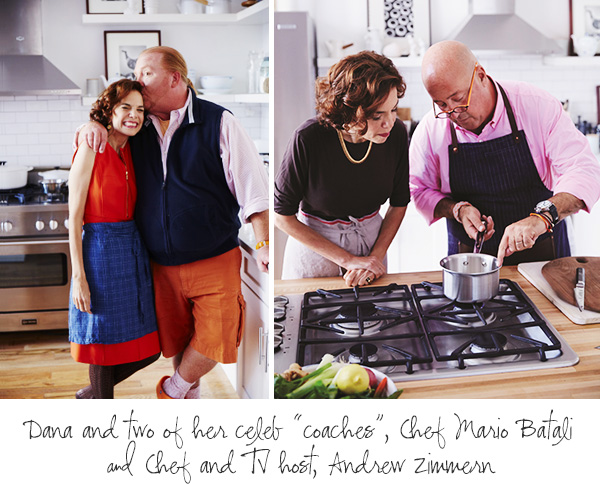

I’ve seen the light; I now think learning from mistakes, no matter whose they are, is extremely helpful. This book is for anyone who wants to become a better cook.

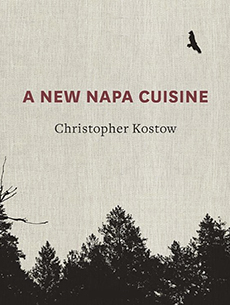
A New Napa Cuisine
by Christopher Kostow
Ten Speed Press/Penguin Random House. 304 pp.
Christopher Kostow, the chef at Meadowood in Napa, is the youngest ever to receive three Michelin stars; not bad for a philosophy major who learned to cook his way up from a line cook to executive chef, as opposed to graduating from a fancy culinary school.
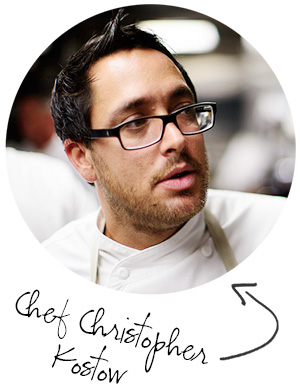
This is part cookbook with recipes and part Kostow’s philosophy on how he relates to the land and the foods it produces. His book is not for beginners; rather, it’s for those who seek inspirational recipes, which they may never follow exactly, recipes that elevate the imagination such as “trout yellow beets forgotten herbs.”
But beginning cooks and just about everyone else can learn a lot from this book just by reading it. Aside from 150 recipes, it includes a history of the surrounding area in Napa, the farmers and artisans who live there, how Kostow grew a garden that now provides herbs and vegetables for the restaurant, and his discovery of wild edibles.
Readers will also enjoy looking through 150 exquisite images by photographers Tayler Peden and Jen Munkvold. Despite its size, the book is somewhat understated, with its sand cloth cover and matt, not glossy photographs. Kostow, who prefers understatement in every aspect of his food domain, chose photographers Peden and Munkvold because he knew they could be “dramatic without being melodramatic’ …and “would help strip away any visual preciousness or artifice.”
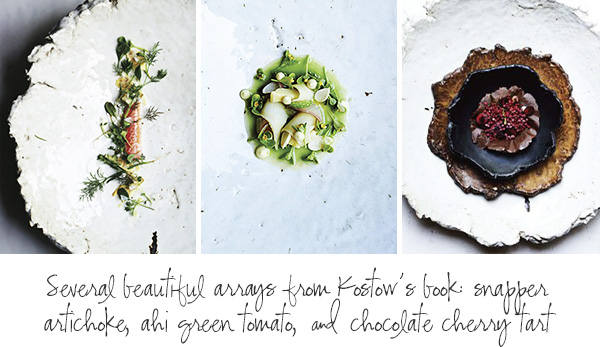

Anyone with an artistic soul would appreciate this book. But it’s ideal for an adventurous cook or a professional chef who strives to be more creative. It would look particularly good on a coffee table in a rustic setting or a contemporary one.

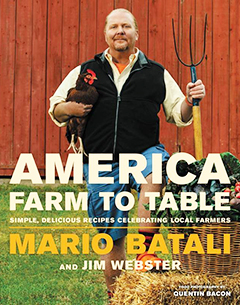
America Farm To Table: Simple REcipes, Celebrating Local Farmers
by Mario Batali with Jim Webster
Grand Central Publishing. 354 pp.
Farm to table has become a battle cry for chefs who support local farmers. Mario Batali is one of them. Big time. He sees farmers “as the rock stars of the food world.”
After nine cookbooks that include both Spanish and Italian cuisine, 26 restaurants, the ginormous food hall, Eataly, a daily appearance on a TV show called “The Chew,” and many more accomplishments, you’d think Batali would be sated. But, no. It seems he’s come to roost in the USA.
Fresh, local ingredients is what makes delicious food, and for this his latest cookbook, Batali and his co-author, Jim Webster, traveled all over the country from Maine to California to meet local heroes: farmers, as well as local chefs, who have wonderful, poignant stories to tell; a real awakening for those of us who live in cities about about the lives these folks lead.
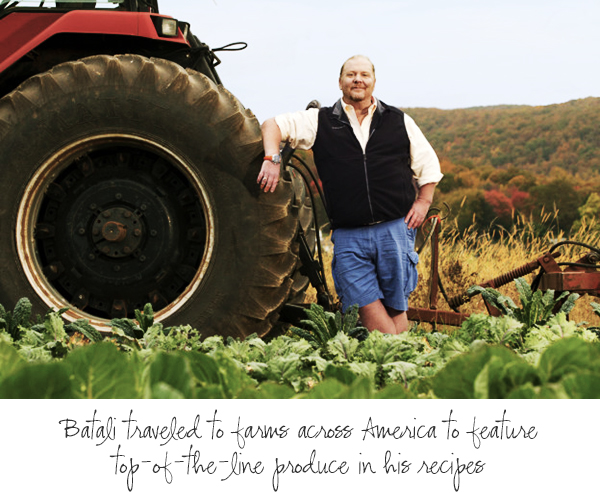
America Farm to Table features over 100 recipes inspired by the produce cultivated by farmers for Community Supported Agriculture and local chefs, such as Chilled Sweet Corn Soup and Chicken Pot Pies with Chard and Peas. These delicious recipes accompanied by color photographs will make you want to try some the next time you come home from the market.
I marvel at Batali’s energetic enthusiasm and generous spirit and am grateful for it too.

Give this book to any foodie; they’ll be glad you did, especially devotees of the farm to table movement.

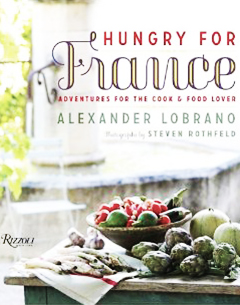
Hungry For France
by Alexander Lobrano
Rizzoli. 264 pp.
I’m hungry for France just thinking about it. In France, the epitome of the slow food movement, they won’t give you the check till you request it, allowing more time for diners to converse, instead of merely consuming food until your table’s real estate becomes someone else’s. In France, you can dine almost anywhere and have a good meal with fresh, local ingredients. But of late, chefs from around the world have taken on what was once the seat of gastronomy.
While classic French cooking with its heavy sauces is passé and Paul Bocuse’s “nouvelle cuisine” is no longer new, Alexander Lobrano, author of Hungry for Paris as well as this new book, Hungry for France, says, “…France still has the finest, most deeply rooted culinary culture of any country in the western world, and can also stand up to challenges from any other place on the compass.”
Lobrano is a man in love with markets and menus. Hungry for France will take you on Lobrano’s culinary journey to find the best food markets, places to dine and the best up and coming chefs in all of France. And he should know. A debonair American, Lobrano has lived in France for thirty years, exploring the countryside from coast to coast. In this book, he writes delightful essays about the restaurants you’ll find there, and about the locals who impart culinary wisdom along with their food, which is evocatively photographed by Steven Rothfeld. In addition, the book contains over 75 recipes, including a rarity from the French Basque county called Velvety Pepper Pan Roast with Eggs, developed by Jane Sigal, cookbook author and contributor to numerous food and wine publications.

This is an elegant cookbook for your favorite Francophile, and anyone who has culinary dreams of France.

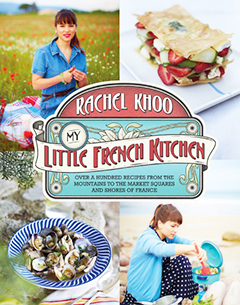
My Little French Kitchen: Over 100 Recipes From The Mountains, Market Squares, and Shores of France
by Rachel Khoo
Chronicle Books
Rachel Khoo is from Croydon, London. Her first cookbook, The Little Paris Kitchen, was based on her BBC2 television show. Shot in her tiny Paris kitchen, the show made Khoo, the daughter of a Malaysian father and an Austrian mother, a star.
That first time around she relied on a two-ring burner and a toaster oven, which turned out to be a selling point: Khoo was like David versus the Goliaths of the food biz—mega chefs like Gordon Ramsey with their state of the art equipment. 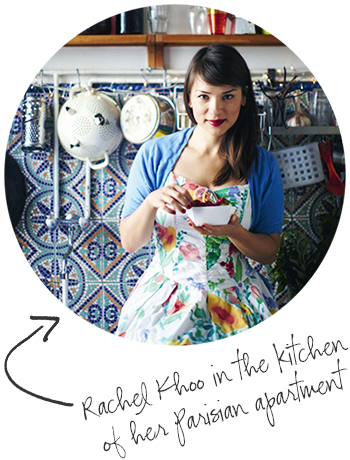 Now, while she still retains her Paris flat, Khoo also lives in London, which she feels has more energy, if less charm, and where she has a more sizable kitchen. But she wishes London food markets were like those in France, which are less expensive and frequented by everyone, not just “hipsters.”
Now, while she still retains her Paris flat, Khoo also lives in London, which she feels has more energy, if less charm, and where she has a more sizable kitchen. But she wishes London food markets were like those in France, which are less expensive and frequented by everyone, not just “hipsters.”
My Little French Kitchen is Khoo’s “love letter to her adopted country,” France. It tells the story of her travels to the four corners of France where, despite difficult terrain and weather, she investigated the countryside by every available means, including by driving a mini-bus, in search of dishes that were not only traditional, the hand-me-downs of French grandmas, but of lively new dishes the younger generation in France is eating today.  Khoo writes about the people who welcomed her into their homes, shops, and restaurants, and brings home with her many regional dishes and techniques, which she develops into workable recipes at the end of her journey in her tiny Paris kitchen.
Khoo writes about the people who welcomed her into their homes, shops, and restaurants, and brings home with her many regional dishes and techniques, which she develops into workable recipes at the end of her journey in her tiny Paris kitchen.
Her descriptions of her travels offer an insider’s look at the way of life and dining in places as disparate as Normandy and the Cote d’Azur. And the recipes, too, range the countryside, from St. Tropez’s delicate Tartelette Tropesienne to Lyon’s hearty Tourte a la Sausisse (smoked sausage and kidney pie). One critic has said Khoo’s recipes are too time consuming, but I disagree. While there are many that take thirty minutes to prepare, thirty minutes is not all that long, and others take much less time than that. With 100 of them, there is no shortage of recipes to choose from.

While this is for everyone who loves French food, Khoo’s youthful perspective would make it an especially nice gift from a grandmother to her grandchild or a mother to her daughter.


Mexico: The Cookbook
by Margarita Carillo Aronte
Phaidon. 704 pp.
Big, beautiful and comprehensive, this ode to Mexico by Margarita Carillo Arronte is a tour de force and a pleasure to read. The book is as hot as its pretty pink cover with 650 recipes and 200 full color photographs showcasing the breadth and depth of Mexican food and the various regions they come from. In fact, if you picked up a couple of these books, you could tone up your biceps in no time!
A sign of Mexican food’s increasing popularity in the US is that salsa surpasses ketchup as our condiment of choice. For those whose experience of Mexican dining is still limited to dishes like enchiladas, tacos, and huevos rancheros. Arronte’s recipes will surprise you; the variety and types of foods and spices used in this flavorful and colorful cuisine is staggering.
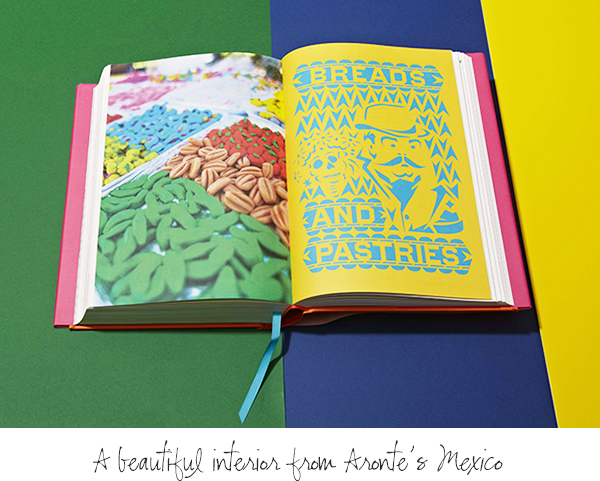
Preparation and cooking times are helpful, because for the most part this tome is not for the cook in a hurry. While there are recipes that only take a few minutes to make, many, like Short ribs in Chili and Coffee Sauce, and Wedding Stew, involve a fair amount of preparation and cooking time. But as they say, “good things come to those who wait.”
Chef/author Arronte, owner of Turtex restaurant in Mexico City, not only gives us a cookbook full of recipes, but she takes us on a tour of Mexico from Baja to the Yucatan, and in the process has provided an unprecedented book about Mexican cooking that will become a staple in the kitchens of home cooks everywhere.

Lovers of Mexican food and those who simply love to cook.

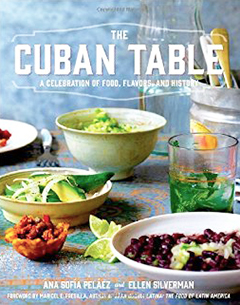
The Cuban Table: A Celebration of Food, Flavors, and History
by Ana Sofia Pelaez
St. Martin’s Press. 336 pp.
Ask any exile, even those who’ve left their homeland by choice, and they’ll tell you the country they come from is never far from their thoughts.
Ana Sofia Pelaez is of Cuban heritage, and writes a blog called hungrysofia.com. Ellen Silverman is a food photographer who wanted to find the right person to write a book about Cuba, tracing the roots of the island’s cooking traditions, to accompany her photographs. They met and the rest is, well… here!
Cuba is so close to the US, just 90 miles off the coast of Florida, and yet so far for political reasons that many of us know little about Cuban cuisine on the island itself. So it was fascinating to read this book, which supplied recipes from gifted Cuban cooks, giving a unique window into the Cuban way of life, not just on the island itself but in Miami and other parts of the globe where Cubans have found a home. As culinary historian and cookbook author Maricel E. Presilla says in the foreword, “All cuisines evolve and change, but when they are endangered, as is the case with Cuban food, we must treasure the timeless classics, and preserve them for generations to come.”

Of course, preserving classics is not always easy, as Pelaez discovered when she began her research with family and friends in Miami: they often didn’t write down their recipes and couldn’t explain what they did. And in Cuba, during times of political upheaval, there were periods when some ingredients were hard to come by, which made serving flavorful meals difficult.
You will find stories of both abundance and scarcity in this book, of exile and challenges, stories that are made poignant by Silverman’s knowing photography. And, oh yes, a kaleidoscope of Cuban recipes that come from both Cuba and from other parts of the world. These include recipes with Latin American and Creole influences for dishes you may never have tasted before, such as Harina Con Cangrejo (Cornmeal stew with crab) and Frituras de Malanga (malanga latkes). Most of these recipes are not for the quick cook or anyone on a diet, but they will satisfy the hunger in all of us for the comforts of home cooking.

Cubans everywhere and all lovers of international cuisine.

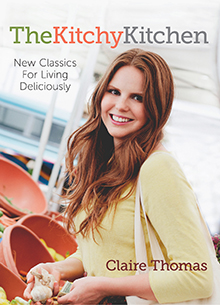
The Kitchy Kitchen: New Classics
for Living Deliciously
by Claire Thomas
Emily Bestler Books/Atria/Simon & Shuster. 280 pp.
Another blogger, who in her mid-twenties, made a rapid name for herself is Claire Thomas. Her blog: thekitchykitchen.com didn’t yet have a huge following when she was “seen by the right people,” resulting in, among other things, a book deal and an offer to host ABC’s Food for Thought, a Saturday morning internet cooking show. In addition to her blog she began to make short food videos about such things as making a simple vinaigrette, which also took off. In some of these videos, she is not seen in a tiny kitchen with a two-ring burner, but is cheerily talking to us in a large, white, bright and beautiful state of the art kitchen.
Thomas, who is both a director and photographer, is pretty and engaging and you get the feeling, young though she is, that she knows where she is going and how to go about getting there. She is grateful for the opportunities she has had so far and says, “The web can open so many doors.” (Makes one want to dust oneself off and start all over again.)
Moreover, Thomas is clearly organized and her new cookbook is too. Open any page and start to salivate with such appetizing dishes as a Spicy Steak Salad and a Classic Lasagne with Ragu Bolognese, Bechamel Burrata, and Herb-Roasted Tomatoes.

This cookbook is suitable for most home cooks, but it has a youthful slant and would be best to give as gift to someone in their late teens, twenties or thirties.

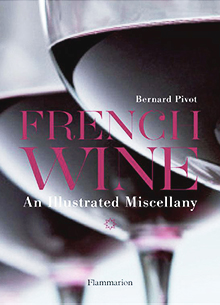
French Wine: An
Illustrated Miscellany
by Bernard Pivot
Flammarion. 258 pp.
Pick up any book by French publisher Flammarian and you will be holding an object of beauty. French Wine by Bernard Pivot is no exception. But before your eyes glaze over at the thought of keeping track of various terroir, soil conditions, climate and the year this wine or that was harvested, produced, bottled, and distributed, sit back and relax; you can learn a lot about wine by just succumbing to the art of story telling.
Bernard Pivot is an esteemed French journalist, who recently became president of the Academie Goncourt, which confers one of France’s most prestigious annual book prizes. He’s had two long running literary television shows, Apostrophe and Bouillon de Culture, and he’s interviewed people as diverse as activist /author Aleksandr Solzhenitsyn and poet/novelist Charles Bukowski.
Pivot reminds me of Charlie Rose; the erudite, soft-spoken man on PBS who also invites fascinating guests, talking to them in a civil, non strident manner, so that our ears won’t hurt and we learn something interesting without any effort. That’s what it’s like reading this book.
As the sub-heading implies the contents are a compilation of miscellany about French wine. Aside from short essays about different wine varieties, he has pieces on everything from wine growers’ rivalry, enologists, sommeliers and even corkscrews. And then there’s the art and plenty of it. Interspersed between these essays are photographs of paintings, photographs of celebrities drinking wine, drawings, cartoons, and wine labels as well as the sayings of famous food writers such as M.F.K. Fisher’s ,“I can no more think of my own life without thinking of wine and wines… than I can remember before I breathed.” There’s a sign on my desk that says something a bit more succinct: “I’m a hybrid, I run on wine and chocolate.” If you’re like me, this book is a must have.

Your favorite wine lover, including yourself.

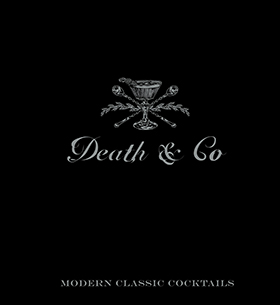
Death & Co: Modern
Classic Cocktails
by David Kaplan, Nick Fauchald,
and Alex Day
Ten Speed Press/Penguin Random House. 320 pp.
There was a time when you walked into a bar and ordered a drink, now there are bar men and women called Mixologists; they’ll not only pour you a drink but they’ll create one just for you.
Since it opened in 2006, in New York’s East Village, Death & Co. ranked in the top ten bars in the world. Since then, co-owners David Kaplan and Alex Day moved to L.A. opened their own disco-inspired cocktail bar, Honeycut, and launched a cocktail consulting group. This book not only contains more than 500 recipes of Death & Co.’s best drinks, but it’s like an educational course on how to make cocktails for the amateur enthusiast. Or even the professional. I mean 500 recipes!
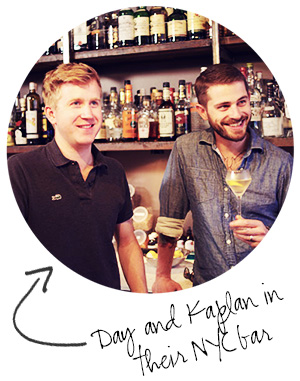
Perhaps TV shows like Mad Men have something to do with nostalgia for cocktails past. Whatever the reason there’s been a resurgence of “It must be five o’clock somewhere.” If your own cocktail repertoire consists of a Mimosa and a Bloody Mary, this book might be a bit intimidating. On the other hand, wouldn’t it be fun to Shake, Shake, Shake!
Between recipes, photographs, and “how to” sections there are essays by regulars including a cellist, a real estate agent and an investment banker, as well as “illustrative charts and infographics.” Some drinks are way too complicated for me—a non-expert—to handle. But many others are doable. And you are given explicit directions right down to the ice, as well as tips both of the helpful and technical.
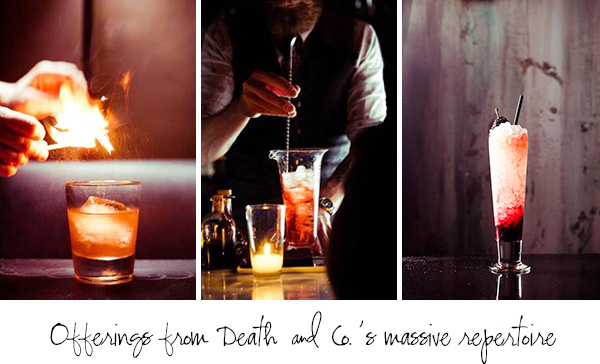
How many daiquiris are there? A lot. In fact, there is so much information in this book that I’d like to sit down by the fire one evening and just pour through it. No pun intended.

Big, black and bold this book is definitely coffee table material, suitable for the man or woman who has everything; for amateur and professional mixologists; for partygoers everywhere; and for anyone who’d like to add a little zest to their life.

